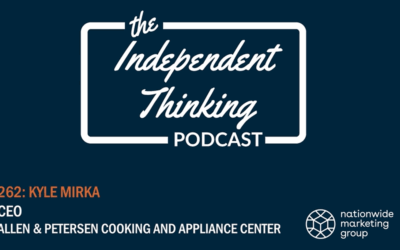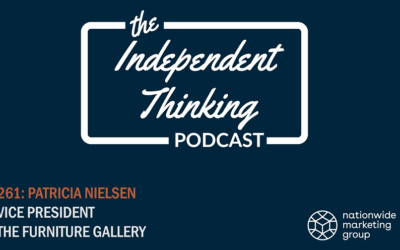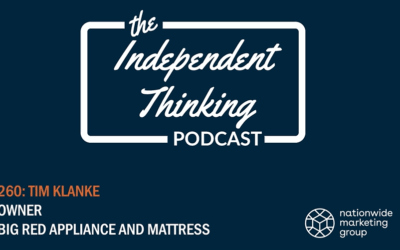Autumn is officially upon us, which means the return of fall’s favorite scents — freshly fallen leaves, cozy bonfires, cinnamon, nutmeg, and the collective aroma of pumpkin spice lattes.
Given that fall is such an iconic season for smells, it feels like the right time to talk about scent marketing — more formally known as olfactory marketing.
What Is Scent Marketing?
Shopify offers this simple definition:
“Scent marketing is a type of sensory marketing targeting a shopper’s sense of smell… The goal is to create a memorable, pleasant shopping experience and increase sales.”
Often overlooked, scent can be an impactful part of a retailer’s overall plan to create the ideal sales-generating atmosphere — one that also includes factors like store layout, decor, lighting, and music.
Yet the idea behind scent-specific marketing starts with science, not sales strategy.
What Is the Science and Psychology of Scent Marketing?
Numerous studies show the powerful connection between smell, memory, and emotions. According to Mood Media, “75% of all emotions generated every day are due to smell, and because of this, we are 100 times more likely to remember something we smell over something we see, hear or touch. Additional scent marketing research shows there is a 40% improvement in mood after being exposed to pleasant scents.”
WATCH THIS VIDEO for more behind the science of scent.
How Effective Is Scent Marketing?
Clearly, our sense of smell has a strong influence on our day-to-day thoughts and actions. But does scent marketing really impact consumer behavior in retail stores?
Two separate studies from Rutgers University concluded that scent improved shoppers’ recall and recognition of both familiar and unfamiliar brands. And Forbes recently reported that “studies show consumers are more inclined to buy something and are willing to pay over 10% more for it in a store that uses scent marketing.”
Shopify even cited research that scent marketing can boost retail sales by up to 11 percent and improve customer satisfaction by up to 20 percent.
Basically, using scents strategically in your store can lead customers to:
- Better remember your business
- Have a more positive perception of your brand
- Equate good smells with good value
- Spend more time in your store
- Potentially spend more money in your store
Top Considerations for Incorporating Scent in Your Store
So how can you, as an independent retailer, tap into the power of scent? The answer starts with a few more questions.
- How would you describe your ideal customers?
- What emotion(s) do you want shoppers to feel?
- How do you want to position your products and your brand?
Your answers to these questions can help guide the fragrance(s) you choose to incorporate in-store.
Common Scents and How They Make You Feel
Popular fragrances are a good place to start. Below is a list of commonly known — and used — fragrances, along with the effects each can have on feelings and moods.
- Fresh linen / cotton blossom — clean, relaxed, comfortable
- Floral scents — positive, happy, less anxious, nostalgic
- Lavendar / eucalyptus / chamomile — calm, tranquil, relaxed
- Vanilla — nostalgic, happy, relaxed
- Citrus — refreshed, energized, alert
- Evergreen / pine — calm, focused, grounded
- Leather — luxurious, nostalgic
- Sandalwood — exotic, luxurious
- Seasonal scents — festive, nostalgic, happy
Not all smells are created equal, and not every customer will have the same reaction; however, finding a scent or two that appeals to most of your customers and evokes a positive experience is key.
Strategic Scent Placement in Stores
This strategy goes beyond placing air fresheners in the restrooms.
The location of the scent can be just as important as the scent itself. Not only do you want to avoid overpowering your customers or giving them a headache, you also don’t need to infuse every inch of your retail space with something to smell.
Localized options include:
- At the entrance to your store
- Around the checkout or customer service area
- Near premium or featured products
- Using scents to distinguish product categories
For example, if you sell kitchen appliances, a food-related scent could be impactful, whereas linen or lavender are more aligned with bedroom furniture and mattresses.
Don’t be afraid to experiment with various locations and smells.
Budget-Friendly Scent Options for Retail Stores
Professional scent delivery options do exist, and some businesses even opt to create a personalized fragrance. However, that level of commitment is not required to venture into scent marketing.
To start out — or stay budget-conscious — you only need to invest in a simple diffuser (or two) and essential oils in your fragrance(s) of choice.
Still not sure where to start when it comes to scent marketing?
Take advantage of this fall or the holiday season to incorporate fragrances typically smelled and loved by many this time of year. Gauge your customers’ reactions. Pay attention to any changes in behavior. And adjust accordingly for the seasons to come.
Make your in-store experience a more memorable one with scents that boost both moods and sales.




